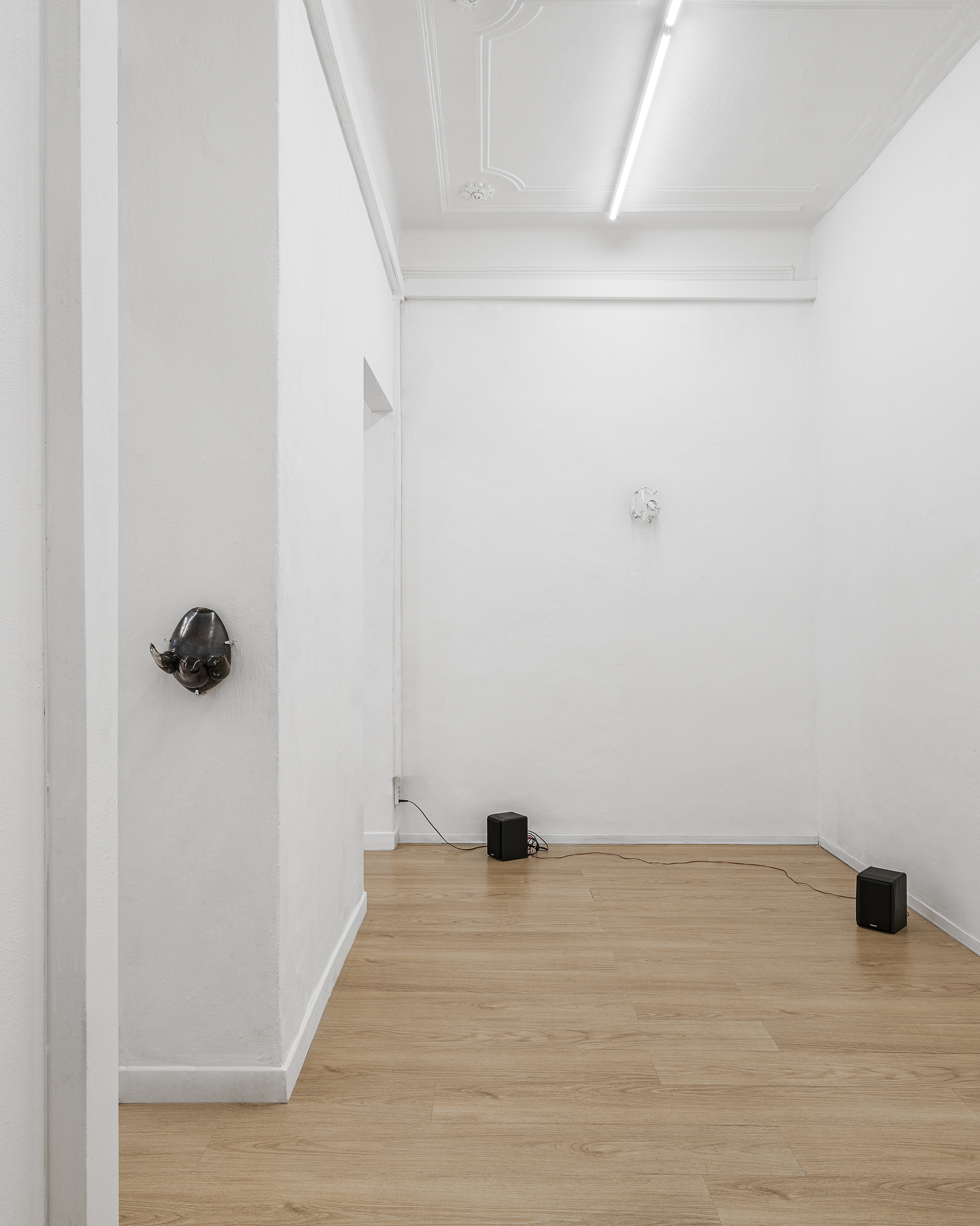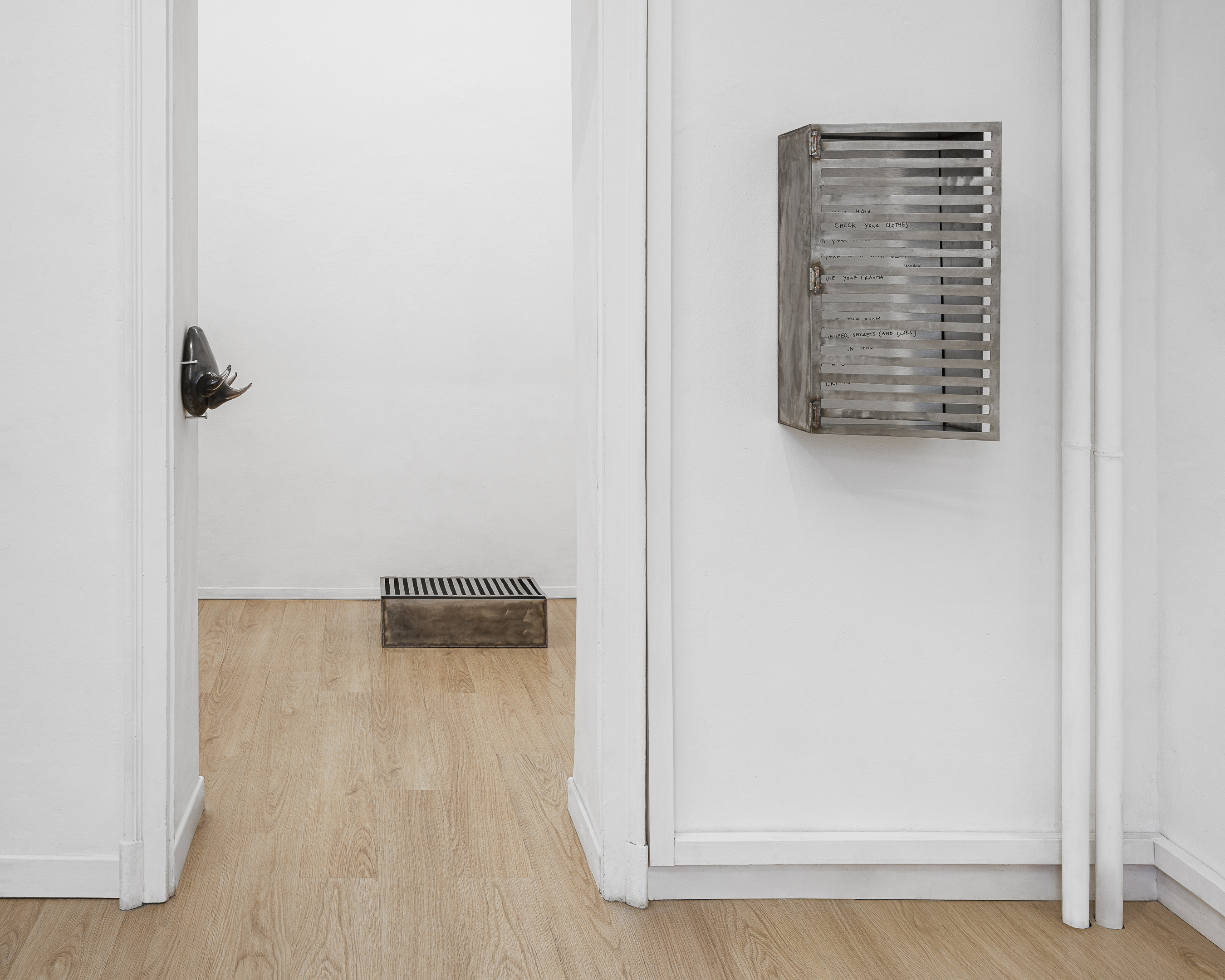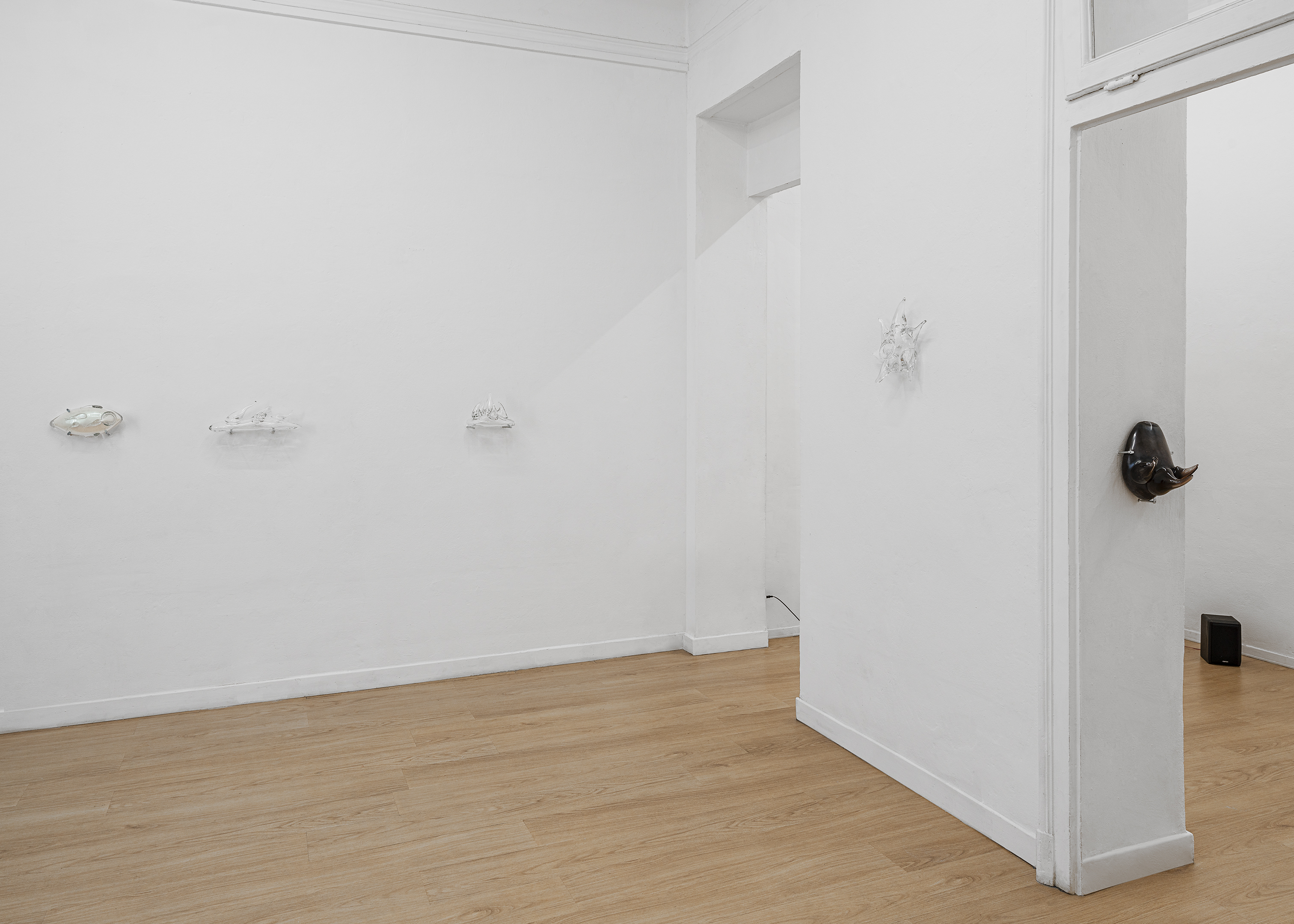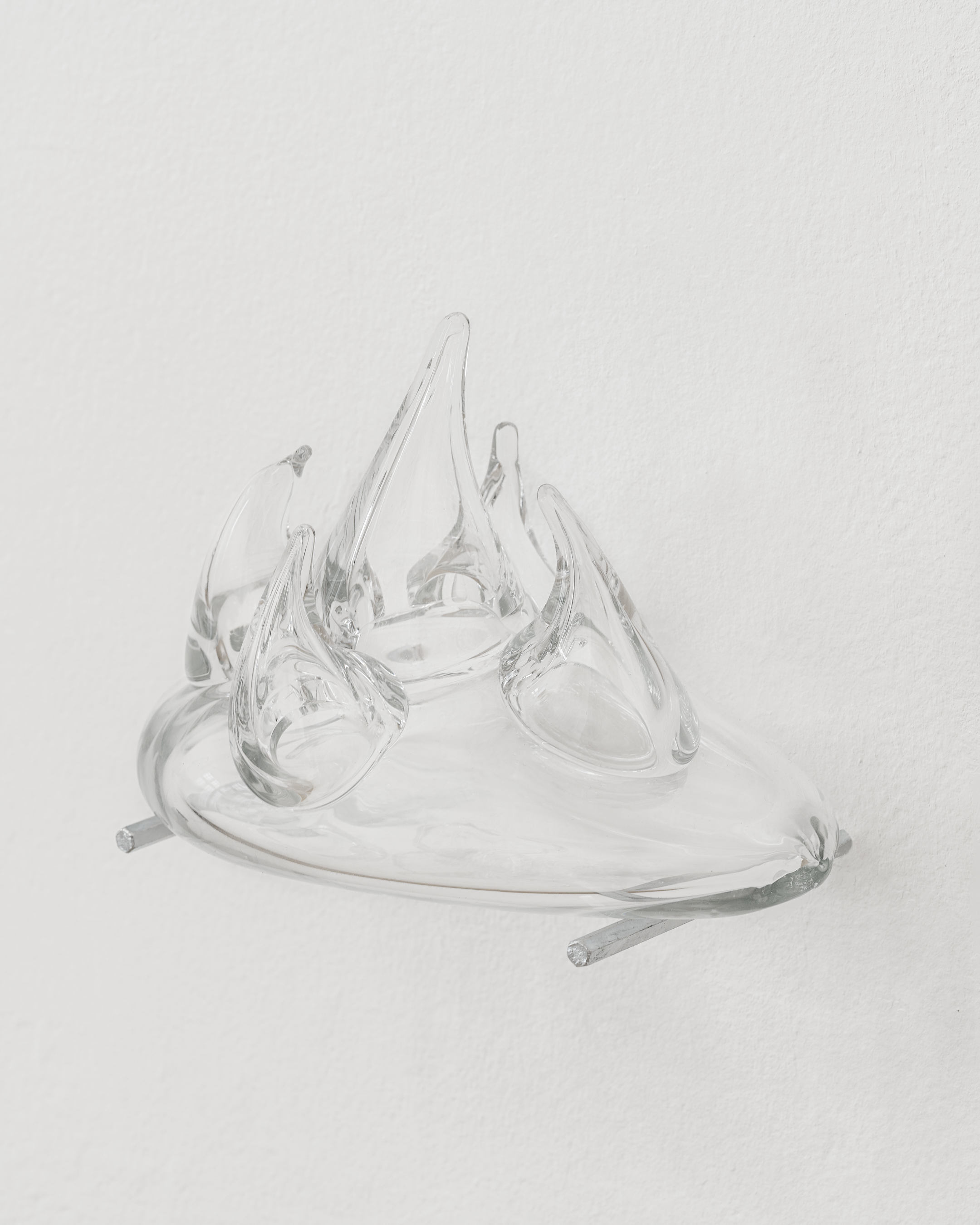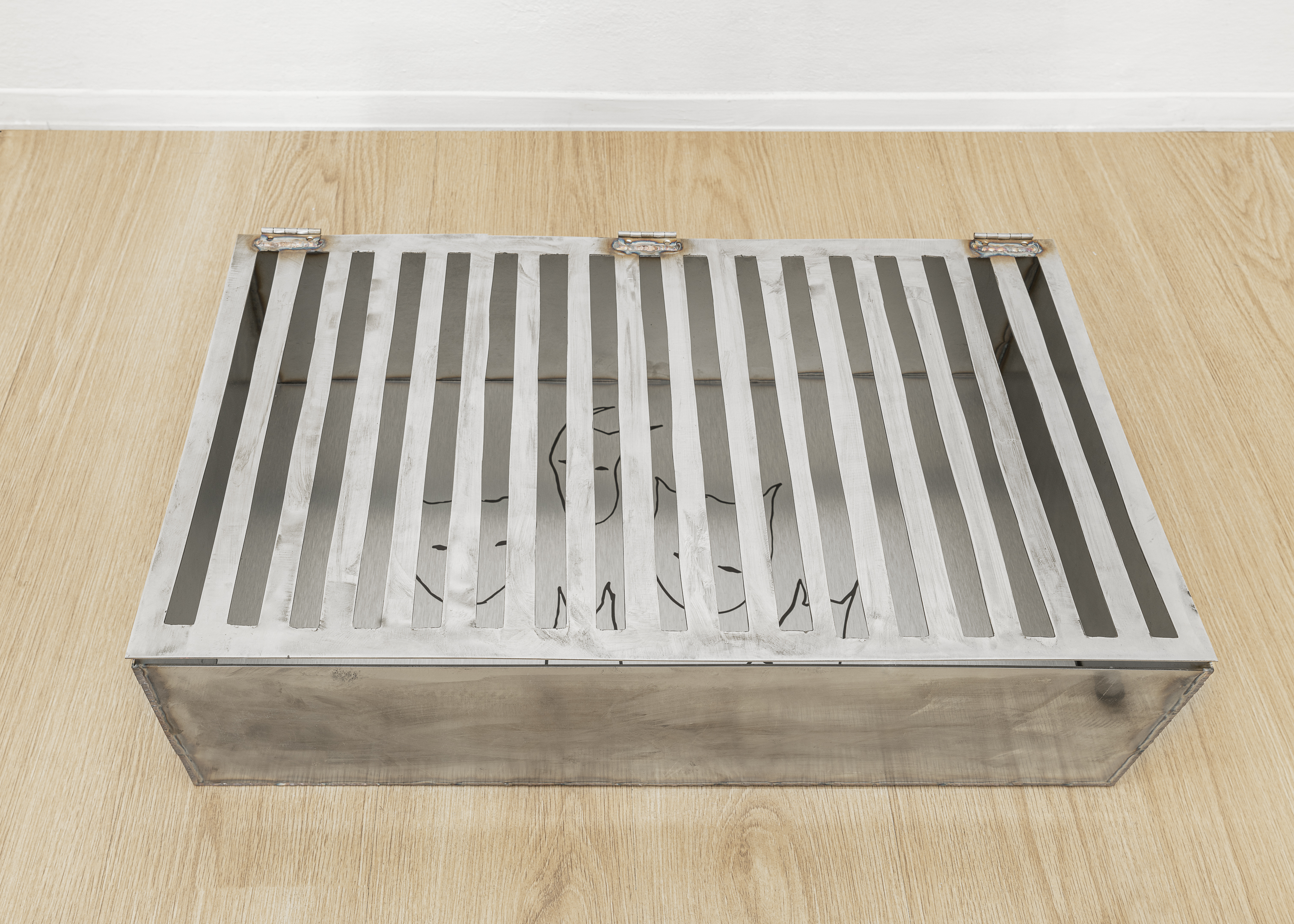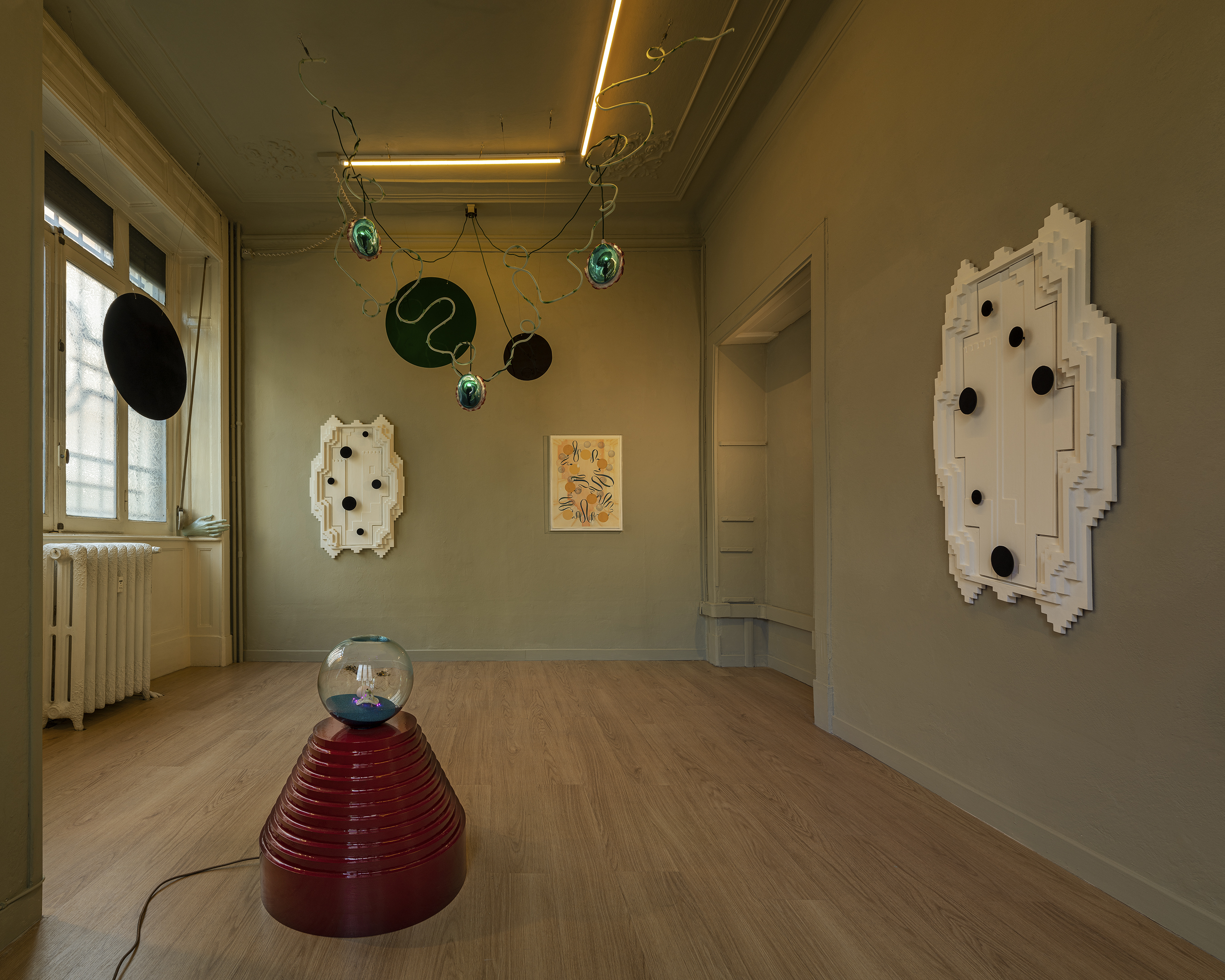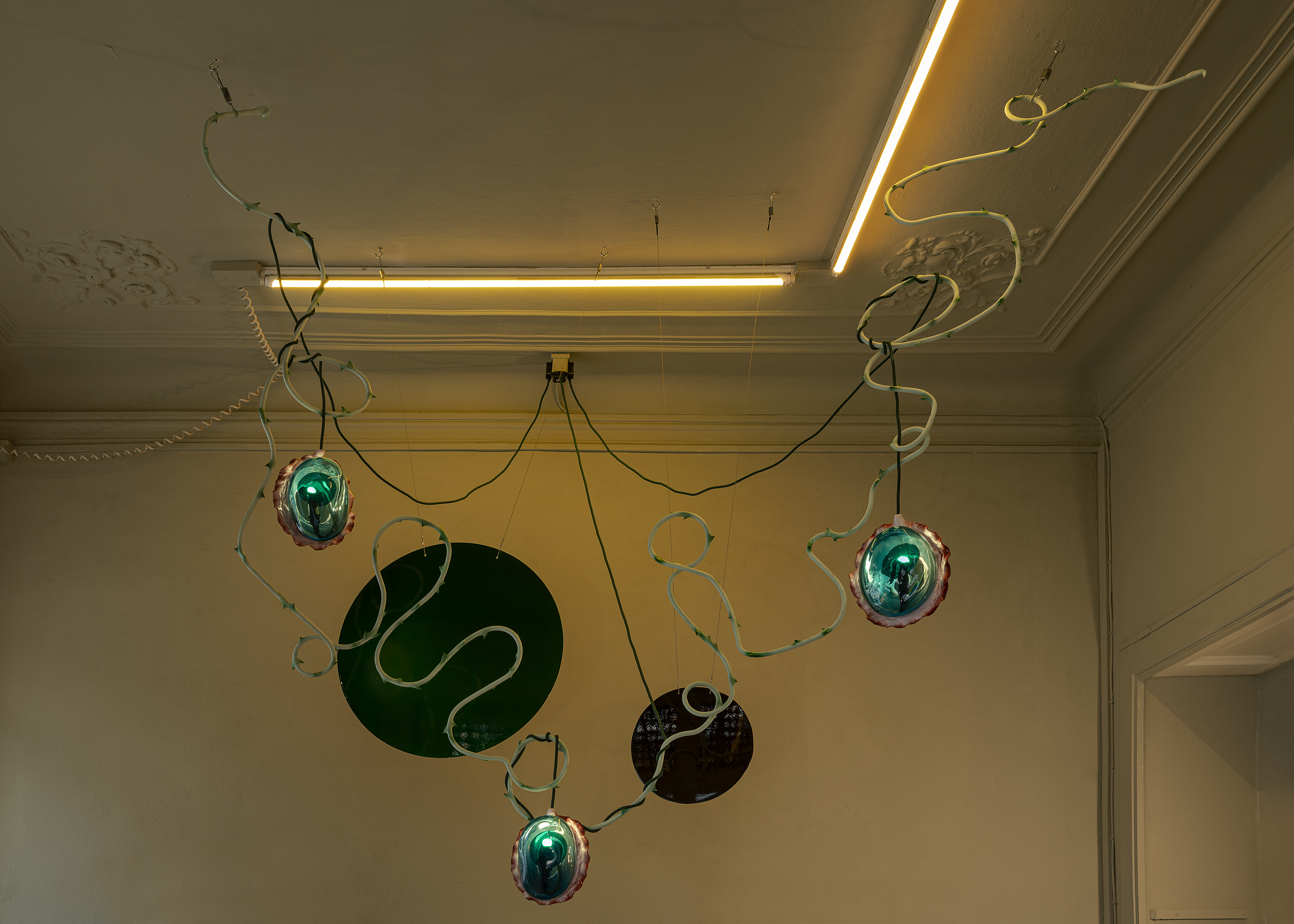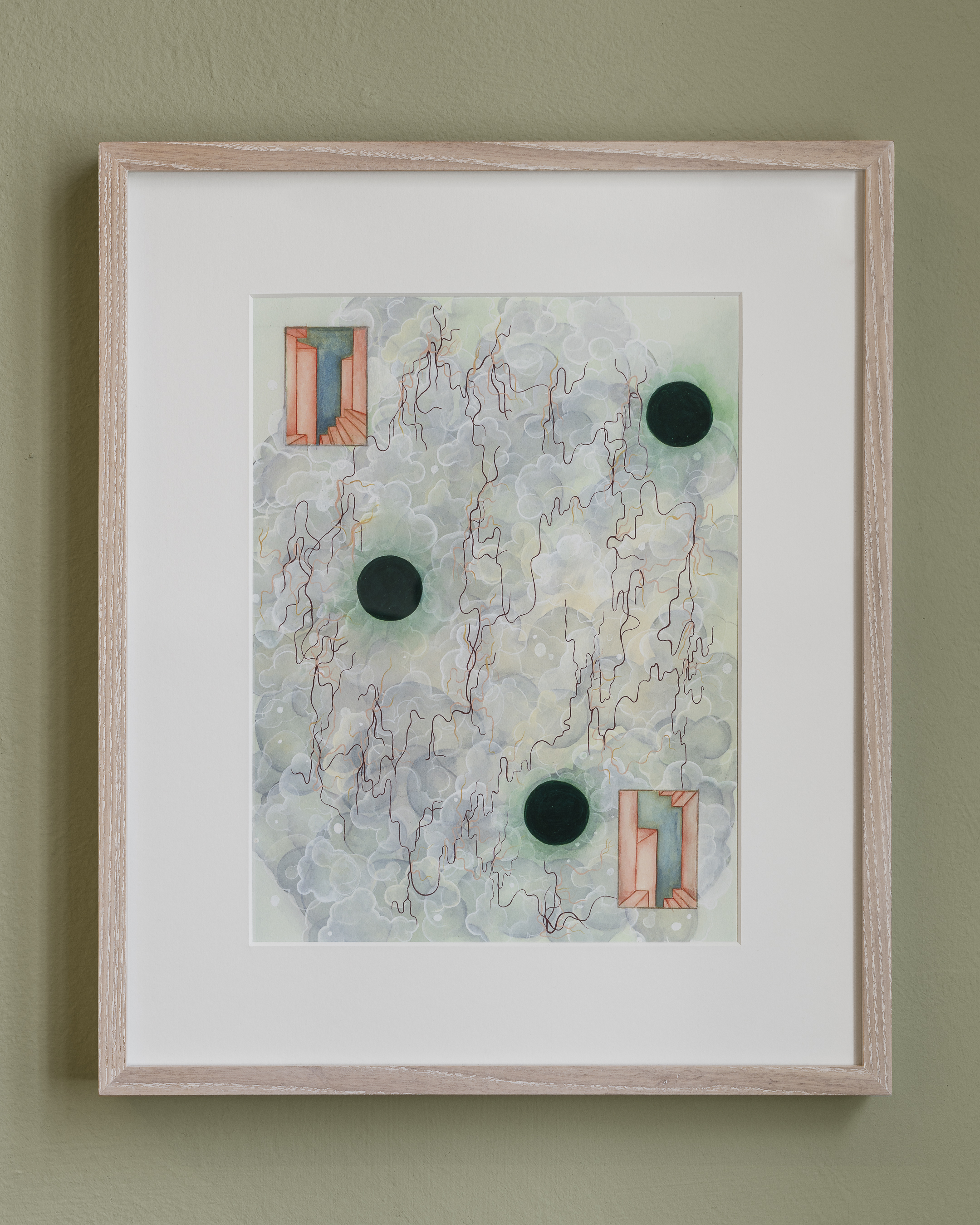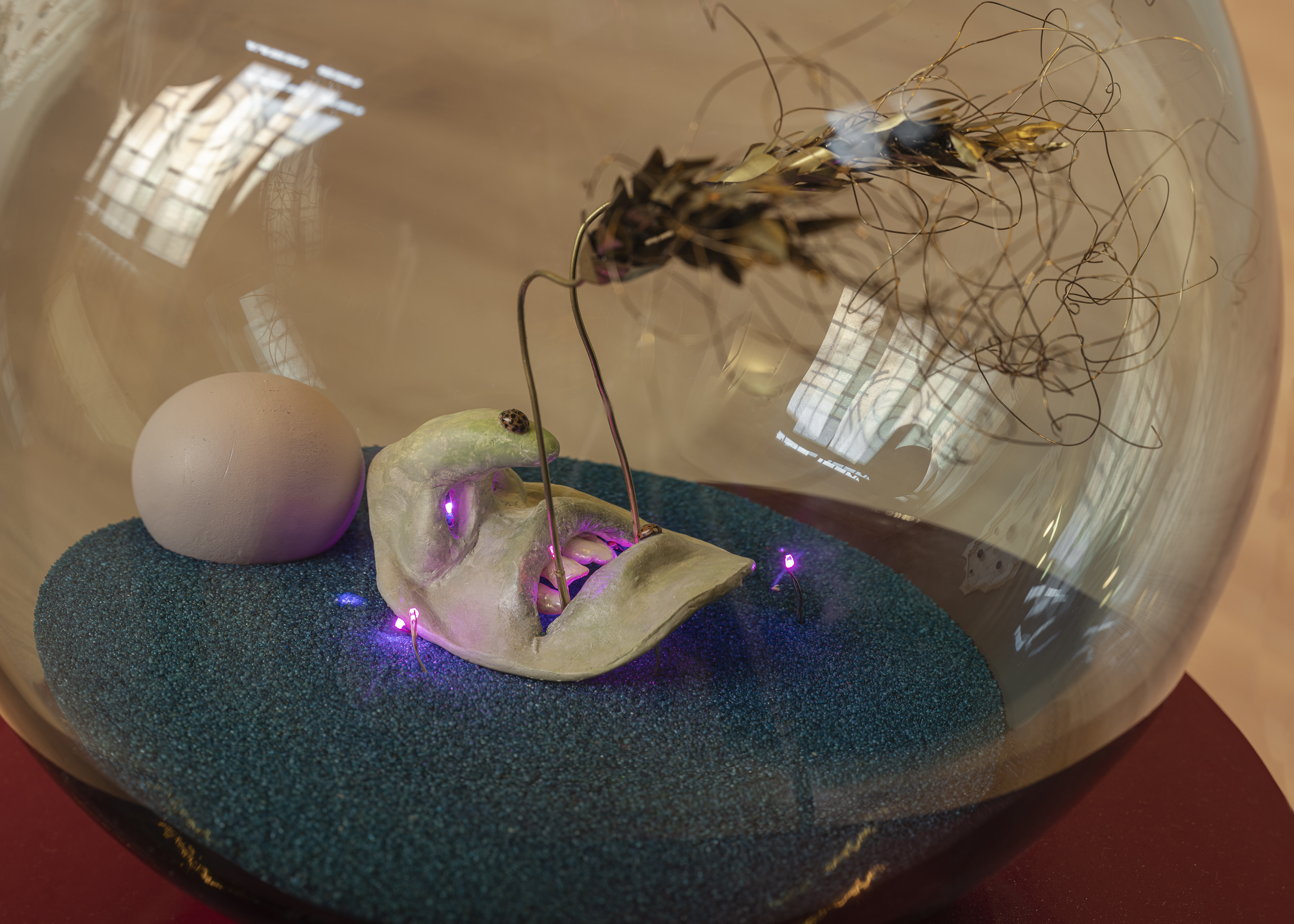you can now enter: notes on immersion
Tarek Lakhrissi and Tai Shani
Clima, Milan, IT
16/03 — 07/05/2023
Immersion is often viewed as a one-off event: a highly engaging ‘experience’, a deep mental involvement or flow that transports us to another layer of reality. Yet, in many ways, immersion is less about the simple ‘act’ of dipping into a substance or a state – rather, it invokes a complete lack of a material distinction between all beings and the world. It is about continuous access without drowning, a practice of presence. This view of immersion or ‘exercise’ is helpful when certain spaces are accessible for some and impenetrable for others. When access is not granted or authorised, but it is struggled for and must be imagined.
Within the gallery space, Tarek Lakhrissi and Tai Shani’s work challenges notions of access on a material and perceptive level. Both artists seek collectivity and share a sensibility towards affect, hybridity, marginal narratives and poetic gestures that circumvent restrictive language structures. Their work, presented for the first time in Milan, take cues from both Italian subaltern histories and revised canonical narratives, opening the doors to other social worlds while remaining grounded in the current one.
II. [crossing]
In his newly-commissioned body of work, a multi-sensory installation encompassing text, sound, and sculpture, Tarek Lakhrissi investigates means of entry, re-imagining constraining spaces by conjuring the metaphysical space of ‘hell’. Drawing from his background in literature, Lakhrissi delves into a revised version of Dante’s Inferno, considering Monique Wittig’s lesbian re-writing of the same. In Wittig’s experimental narration, ‘l’enfer’ is a place with rigid conditions, both social and climatic. But unlike Dante’s story, hell is often more common-looking than it seems: it’s accessed via a bar or a pool club, and it’s a place or a situation where Wittig is faced with difficult decisions that put into question her choices in a normative world. Lakhrissi’s work embraces the queer tools embedded in Wittig’s quest, making space for transformative narratives. If ‘hell’ is a place where undesirables are relegated, then Lakhrissi makes it hospitable for all those who are ‘other’. Together with composer Victor Da Silva, he combines sonic traces partly inspired by the Cloud Rap music of TRIPLEGO into an atmospheric sound piece that suspends time and creates a space in between a club and an eerie otherwordly dimension. For Lakhrissi, grates – a recurring visual element found in the streets of Milan – become portals and access points. A poem is embedded in one of the metal sculptures, inviting the reader to find a garden, a space to be with one’s feelings and personal struggles. Inside another grate are little devil creatures – hybrid beings that are both dangerous and faithful guides. Small fires, with their transparency and aqua-coloured iridescence, seem more playful than harmful. The materiality of glass, metal, words and sounds opens an emotional space to re-engage with physicality. By carefully crafting objects and traditions, Lakhrissi creates a place for otherness, a suspension of ‘good’ and ‘evil’: an intimate threshold for sharing and community.
Meanwhile, in Tai Shani’s sculptures and paintings spatial and temporal perspectives merge and flip. Floating bas-reliefs reveal towers, merlons, and stairways from multiple vantage points, their labyrinthine architecture collapsing above and below into one. These map-like relics, recalling both mediaeval buildings and sleek spaceships alike, seem to emerge from an ancient future and elude linear time. Their spheres and staircases repeat on the multi-dimensional, translucent surface of paintings, which the artist began making during lockdown. “These look like and are portals for me to enter into a connected space”, writes Shani, referring to these paintings as intimate interior spaces freed from “the patriarchal language and structures that restrict lives and imaginations”. In the sculptures, references to vegetal and supernatural figures, become conduits to revise these structures and political histories. A dome on a pyramidal pedestal contains the body part of a witch or a Maiara, a rare example of a benevolent witch in European history that was seen on the island of Alicudi during various instances of Ergot consumption. The witch is not only a figure that stands at the threshold between human and fantasy, a wrecker of morality and civilisation. But also a label that was often attributed to older women, who had limited resources and access to survival. When ergot – a fungus that grows on grains from which LSD is derived – contaminated the rye used to mill bread, the inhabitants of the island of Alicudi found themselves experiencing episodes of visions and hallucinations. In the 450 years of contamination, legends spread of women flying to the mainland in Palermo or Calabria and returning with bags full of food. Shani’s work revives the mythologies and the psychedelic histories of the Aeolian islands, which speak of food scarcity due to land enclosures, exposing material interconnections and realist fantasies against oppressive systems. Like in the popular genre of botanical gothic fiction, vegetal figures transition from a romantic natural backdrop to supernatural actors. Spores and vines become protagonists. The golden rye in a globe temple, a vine with glass eyes hanging from the ceiling, and spiralling ribbons in the painting all become a thread connecting the black sporal dots to access a state of connection and interdependence with all things: an urge towards the collective.
III. [immerse]
Philosopher Emanuele Coccia argues that plants are a “paradigm of immersion” in that they have “contiguity” with their environments: they draw nutrients from the soil and produce the environmental conditions for all life to rot and re-grow. They are physically enmeshed in a world that accommodates them, able to fundamentally shape the world and themselves. It is this continuous and constant co-penetration, the reciprocal ‘mix without losing their identity’ and active exchange that nurtures coexistence.
In this materialist vein, every being is capable of ‘accessing’ and radically transforming the world. Rather than provoking isolated experiences, these works offer subtle reorganisations of the senses.
By redefining perception, and exposing the relationships and boundaries between subjects, substances, systems, and worlds, we perform this ongoing immersive act. You might need to find a way to ‘enter’, feel yourself, and adjust, but you are already here.
Words by Giulia Civardi
You can now enter
The bright room
Fix your hair
Check your clothes
Kiss your bones
Use your mouth
With beautiful words
Use your trauma
Make it fashionable
Tell whatever stories
Leave the room
Whisper secrets in another language
Find a garden with flowers
Cry in silence.
— Tarek Lakhrissi
︎︎︎ Press release
Selected press

